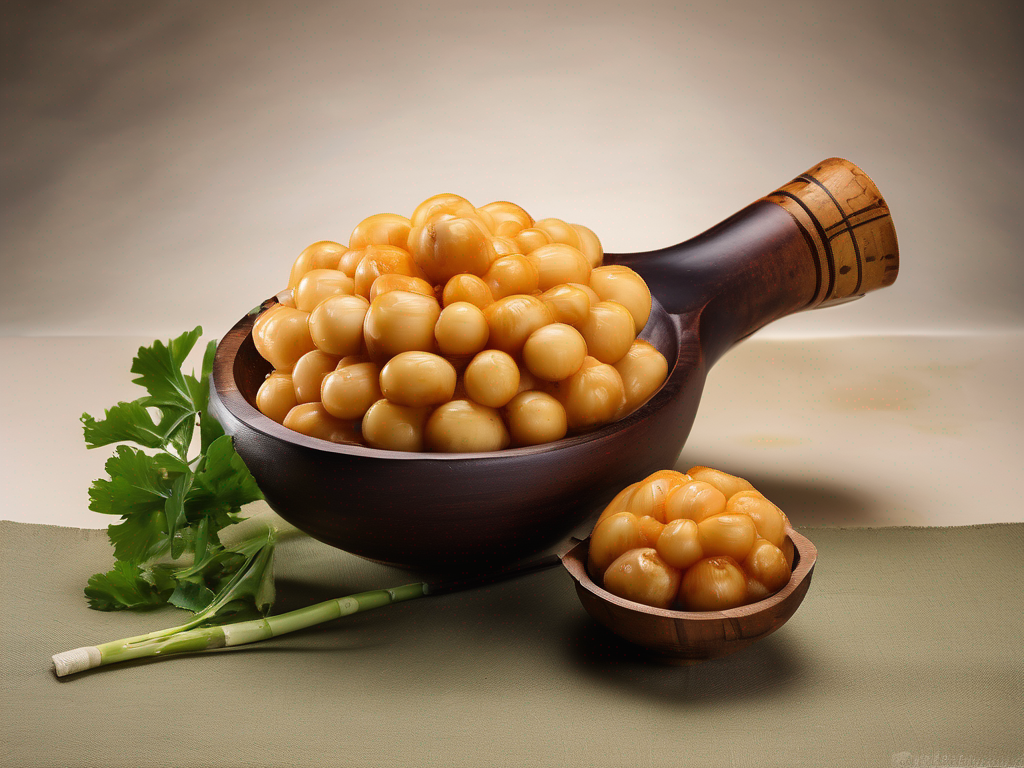
How to Properly Store Calabash to Prevent Early Spoilage
Get Your Free Food Safety Cheat Sheet
30 most common foods with instant answers. Print it and stick it on your fridge—completely free!
How to Properly Store Calabash to Prevent Early Spoilage
Calabash, also known as bottle gourd, white-flowered gourd, or lauki in some regions, is a versatile and nutritious vegetable that is commonly used in various culinary dishes. Proper storage of calabash is crucial to maintain its freshness and prevent early spoilage. In this guide, we will discuss the best practices for storing calabash to ensure its quality and safety. (Calabash)
Understanding Calabash
Before diving into storage tips, let's briefly understand what calabash is. Calabash is a long, green vegetable with a mild flavor and a firm texture. It is rich in essential nutrients such as vitamin C, vitamin B, and fiber, making it a popular choice in healthy diets. Calabash can be consumed raw, cooked, or juiced, offering a range of culinary possibilities.
Factors Affecting Calabash Spoilage
To effectively store calabash, it is essential to understand the factors that contribute to its spoilage. Some common factors include:
- Moisture: Excess moisture can lead to mold growth and spoilage.
- Temperature: Calabash should be stored at the optimal temperature to prevent premature decay.
- Exposure to Air: Exposure to air can cause calabash to dry out and lose its freshness.
- Ethylene Gas: Calabash is sensitive to ethylene gas, which can accelerate ripening and spoilage.
By addressing these factors, you can prolong the shelf life of calabash and enjoy its freshness for longer.
Tips for Properly Storing Calabash
Now, let's explore practical tips for properly storing calabash to prevent early spoilage:
1. Choose Fresh Calabash
When purchasing calabash, select firm, unblemished vegetables without any soft spots or signs of decay. Fresh calabash will have a vibrant green color and a firm texture.
2. Store at the Right Temperature
Calabash should be stored in a cool, dry place away from direct sunlight. Ideally, store calabash in the refrigerator crisper drawer at a temperature of around 50-55°F (10-13°C) to maintain its freshness.
3. Properly Wrap Calabash
To prevent moisture loss and maintain optimal freshness, wrap calabash in a paper towel or breathable plastic wrap before placing it in the refrigerator. Avoid storing calabash in a sealed plastic bag, as it can trap moisture and promote spoilage.
4. Avoid Ethylene-Producing Fruits
Calabash is sensitive to ethylene gas, which is produced by certain fruits like apples, bananas, and tomatoes. Store calabash away from ethylene-producing fruits to prevent premature ripening and spoilage.
5. Check and Rotate Calabash Regularly
Regularly inspect stored calabash for any signs of decay or soft spots. Rotate the vegetables to ensure even air circulation and prevent moisture buildup in the storage container.
Conclusion
Proper storage is essential to maintain the freshness and quality of calabash. By following the tips outlined in this guide, you can prolong the shelf life of calabash and enjoy its nutritional benefits in your meals. Remember to choose fresh calabash, store it at the right temperature, wrap it properly, avoid ethylene-producing fruits, and check and rotate calabash regularly to prevent early spoilage. With these practices in place, you can make the most of this versatile vegetable in your culinary creations. (Calabash)
Authoritative Food Safety References
These agencies and university labs inform every tip and health precaution we publish.
USDA FoodKeeper – Cold Storage Guidelines
Official refrigerator, freezer, and pantry timelines maintained by the U.S. Department of Agriculture.
Visit USDA FoodKeeperFDA Produce Safety Rule & Grower Guidance
Field-to-fridge handling practices that prevent contamination of fruits, vegetables, and leafy greens.
Visit FDA Produce SafetyCDC Foodborne Illness Prevention Hub
Surveillance-backed guidance on pathogens, symptoms, and steps to reduce foodborne illness risk.
Visit CDC Food SafetyUC Davis Postharvest Technology Center
University research detailing optimal storage atmospheres for produce after harvest.
Visit UC Davis PostharvestPenn State Extension – Home Food Preservation & Safety
Peer-reviewed extension bulletins on safe canning, chilling, and reheating practices.
Visit Penn State ExtensionGet Your Free Food Safety Cheat Sheet
30 most common foods with instant answers. Print it and stick it on your fridge—completely free! Want more? Upgrade to the complete guide with 70+ foods.
Scan your food directly and get instant safety info using our AI-powered camera feature.